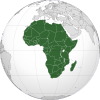埃塞俄比亚经济| 货币 | 比尔 (ETB, ብር) |
|---|
| 财政年度 | 7 月 7-8 日 |
|---|
贸易组织 | 非盟, AfCFTA, COMESA, IGAD, WTO (观察员), G24 |
|---|
国家分组 | |
|---|
|
| 人口 | ▲ 124,937,259 (2023)[3]
|
|---|
| GDP |
- ▲ 1,561 亿美元(名义,2023 年估计值)[4]
- ▲ 3938.5 亿美元(购买力,2023 年估计)[4]
|
|---|
| GDP排名 | |
|---|
GDP增长率 |
- 7.7% (2018) 9.0% (2019)
- 6.1% (2020) 6.3% (2021)[5]
|
|---|
人均GDP |
- ▲ 232.3 亿美元(2022 年估计)[4]
- ▲ 3 685 美元(购买力平价,2023 年估计值)[4]
|
|---|
人均GDP排名 | |
|---|
各产业GDP | |
|---|
| ▼34.8% (2022年估计)[7] |
|---|
|
- ▼ 20%(2019 年,世界银行)[8]
- 32.6% 低于 1.90 美元/天 (2015)[9]
|
|---|
| |
|---|
| |
|---|
劳动力 |
- ▲ 60,026,672 (2022)[14]
- ▲ 就业率 77%(2022 年)[15]
|
|---|
各产业劳动力 | |
|---|
| 失业率 | ▲ 4% (2022)[17]
|
|---|
主要产业 | 食品加工、饮料、纺织品、皮革、化学品、金属] 加工, 水泥 |
|---|
| ━ 第159名 (低于平均值, 2020)[18] |
|---|
|
| 出口 | ▲ 104.5 亿美元(2022 年估计)[19]
|
|---|
出口商品 | 咖啡、阿拉伯茶、黄金、皮革制品、活动物、油籽 |
|---|
主要出口伙伴 | |
|---|
| 进口 | ▲ 232.3 亿美元(2022 年估计)[21]
|
|---|
进口商品 | 机械和飞机、金属和金属制品、电气材料、石油产品、机动车辆、[[化学物质] |化学品]]和肥料 |
|---|
主要进口伙伴 | |
|---|
| ▲ 316 亿美元(2022 年估计)
资金流入 24.3 亿美元(2021-22 年估计值) |
|---|
| ▲ -152 亿美元(占 GDP 的 2.77%,2022 年估计)
|
|---|
| ▲ 522.1 亿美元(2022 年估计)[23]
|
|---|
|
| ▼ 占 GDP 的 43.93%(2022 年估计)[4] |
|---|
| 收入 | ▲ 261.8 亿美元( 2022 年预计)
|
|---|
| 支出 | ▲268 亿美元(2022 年估计)
|
|---|
| 经济援助 | 3.08 亿美元(受援国) (2001[update]) |
|---|
| 标准普尔:[24]
B(外币评级)
B(当地货币评级)
B(条款和条件评估),
穆迪:[25]
B1(展望稳定)
惠誉:[26]
B(展望稳定) |
|---|
| ▼ 24 亿美元(2022 财年预计)[16] |
|---|
|
埃塞俄比亚经济是一个混合型和过渡性的经济,拥有庞大的公共部门。埃塞俄比亚政府正在将许多国有企业私有化,并向市场经济迈进。[27]经济中的银行、电信和交通部门由政府拥有的公司主导。
埃塞俄比亚是世界上经济增长最快的国家之一,也是非洲第二大人口大国。[28] 前政权时期政府拥有的许多财产现在已经私有化,或正在进行私有化,并在不久的将来实现其金融部门的自由化。[29]然而,某些部门,如电信、金融和保险服务、航空和陆地运输服务以及零售,被认为是战略部门,预计在可预见的未来仍将由国家控制。埃塞俄比亚近50%的人口年龄在18岁以下。尽管小学和大学的教育入学率大幅提高,但创造的就业机会并没有跟上教育机构产出的增长。该国每年必须创造数十万个就业机会,才能跟上人口增长的步伐。
历史
 人均GDP发展情况
人均GDP发展情况
与大多数撒哈拉以南非洲国家不同,埃塞俄比亚的资源使该国能够与外界保持几个世纪的联系。[30] 自古以来,埃塞俄比亚商人就用黄金、象牙、麝香和野生动物皮来交换盐和丝绸、天鹅绒等奢侈品。[30] 到十九世纪末,咖啡已成为埃塞俄比亚较重要的经济作物之一。[30] 当时,大多数贸易沿着两条主要贸易路线流动,这两条路线的终点都是西南偏远的科法岛地区。[30] 从那里,一条路线向北经贡德尔和阿杜瓦到马萨瓦,另一条路线沿着阿瓦什河谷到达哈勒尔,然后到达红海的柏培拉或泽拉。[30]
尽管拥有许多财富,但在阿克苏姆陷落后,埃塞俄比亚将不再是一个伟大的贸易国家。[30]大多数埃塞俄比亚人鄙视商人,而宁愿效仿该国的传奇战士和牧师。[30]在该国站稳脚跟后,希腊、亚美尼亚和阿拉伯商人成为埃塞俄比亚与外界之间的经济中介。[30]阿拉伯人也在内陆地区定居,并最终主导了除小额贸易之外的所有商业活动。[30]
1941 年,意大利人结束对埃塞俄比亚的占领,留下的国家的经济结构与几个世纪以来的情况没什么不同。[31] 仅在沟通方面有所改善,特别是在道路建设领域,并尝试建立一些小型工业并引入集约农业,特别是在意大利自 1890 年以来占领的厄立特里亚。[31]但这些变化是有限的。 由于只有一小部分人口参与货币经济,贸易主要由易货贸易组成。[31]雇佣劳动力有限,经济单位基本自给自足,对外贸易微不足道,制成品市场极小。[31]
在 20 世纪 40 年代末和 1950 年代,经济的大部分内容保持不变。[32]政府的发展重点是扩大官僚结构和辅助服务。[32]大多数农民耕种小块土地或放牧牲畜。[32]传统和原始的耕作方法为人们提供了温饱的生活水平。[32]此外,许多游牧民族在干旱地区饲养牲畜,过着季节性迁徙的生活。[32]农业小幅增长,工业占经济总量比重较小。[32]
參考文獻
- ^ World Economic Outlook Database, April 2019. IMF.org. International Monetary Fund. [29 September 2019]. (原始内容存档于2019-06-17).
- ^ World Bank Country and Lending Groups. datahelpdesk.worldbank.org. World Bank. [29 September 2019]. (原始内容存档于2019-10-28).
- ^ World Population Prospects - Population Division - United Nations. population.un.org. [2023-07-29]. (原始内容存档于2022-07-11).
- ^ 4.0 4.1 4.2 4.3 4.4 World Economic Outlook Database, October 2022. IMF.org. International Monetary Fund. [29 July 2023]. (原始内容存档于2023-02-06).
- ^ Report for Selected Countries and Subjects. IMF. [2022-04-20]. (原始内容存档于2022-08-03) (英语).
- ^ Ethiopia: Share of economic sectors in the gross domestic product (GDP) from 2010 to 2020. [15 February 2022].
- ^ Ethiopia's Inflation Rate Drops For First Time in Four Months. bnnbloomberg.ca. Bloomberg. [11 July 2022]. (原始内容存档于2023-03-25).
- ^ Poverty headcount ratio at national poverty lines (% of population). data.worldbank.org. World Bank. [11 February 2019]. (原始内容存档于2020-10-29).
- ^ Poverty headcount ratio at $1.90 a day (2011 PPP) (% of population) - Ethiopia. data.worldbank.org. World Bank. [5 December 2019]. (原始内容存档于2023-03-24).
- ^ GINI index (World Bank estimate). data.worldbank.org. World Bank. [29 September 2020]. (原始内容存档于2020-09-26).
- ^ Selima., Jāhāna. Work for human development (PDF). Human Development Report. United Nations Development Programme. 2015 [2023-08-18]. ISBN 9789211263985. OCLC 936070939. (原始内容存档 (PDF)于2018-12-24).
- ^ UN Pledges Support to Improve Ethiopia's Human Development. www.ena.net. [13 September 2022]. (原始内容存档于2022-11-30).
- ^ Inequality-adjusted Human Development Index (IHDI). hdr.undp.org. HDRO (Human Development Report Office) United Nations Development Programme. [11 December 2019]. (原始内容存档于2020-12-12).
- ^ Labor force, total - Ethiopia. data.worldbank.org. World Bank. [29 July 2023]. (原始内容存档于2019-08-25).
- ^ Employment to population ratio, 15+, total (%) (modeled ILO estimate). data.worldbank.org. World Bank. [29 July 2023]. (原始内容存档于2022-03-17).
- ^ 16.0 16.1 The World Factbook. CIA.gov. Central Intelligence Agency. [11 February 2019]. (原始内容存档于2023-12-22).
- ^ Unemployment, total (% of total labor force) (modeled ILO estimate). data.worldbank.org. World Bank. [29 July 2023]. (原始内容存档于2018-11-18).
- ^ Doing Business in Ethiopia - World Bank Group. www.doingbusiness.org. [10 January 2017]. (原始内容存档于11 January 2017).
- ^ Exports of goods and services(current US$)-Ethiopia. data.worldbank.org. World Bank. [2023-03-24]. (原始内容存档于2023-03-28).
- ^ Export Partners of Ethiopia. The Observatory of Economic Complexity. [21 June 2021]. (原始内容存档于2021-10-23).
- ^ Imports of goods and services(current US$)-Ethiopia. data.worldbank.org. World Bank. [2023-03-24]. (原始内容存档于2022-11-08).
- ^ Import Partners of Ethiopia. The Observatory of Economic Complexity. [21 June 2021]. (原始内容存档于2021-10-26).
- ^ Ethiopia: National debt from 2017 to 2027. statista.com. [2 December 2022]. (原始内容存档于2023-06-05).
- ^ S&P Global Market Intelligence. www.capitaliq.com. [16 April 2018]. [失效連結]
- ^ Moody's: Ethiopia's credit profile balances high growth and low debt costs against range of challenges. moodys.com. 1 August 2017 [16 April 2018]. (原始内容存档于2021-10-23).
- ^ Press Release. www.fitchratings.com. [16 April 2018]. (原始内容存档于2018-12-08).
- ^ Sanchez, Dana. 埃塞俄比亚向私有化迈进。这不是钱的问题。这是关于技术。. AFKInsider. 2017-01-10 [2017-01-12]. (原始内容存档于12 January 2017) (美国英语).
- ^ 私营企业推动了埃塞俄比亚的增长. IFC. [2012年12月27日]. (原始内容存档于2016年7月29日).
- ^ Ethiopia sells off seven state firms, to offer more. Reuters. 19 March 2012 [27 December 2012]. (原始内容存档于2017-01-12).
- ^ 30.0 30.1 30.2 30.3 30.4 30.5 30.6 30.7 30.8
 前文有一个或多个句子包含现时处于公有领域的内容:Wubneh, Mulatu. Ofcansky, Thomas P.; Berry, LaVerle , 编. Ethiopia: a country study 4th. Washington, D.C.: Federal Research Division, Library of Congress: 146–150. 1993 [2023-08-07]. ISBN 0-8444-0739-9. OCLC 25869403. (原始内容存档于2022-03-27).
前文有一个或多个句子包含现时处于公有领域的内容:Wubneh, Mulatu. Ofcansky, Thomas P.; Berry, LaVerle , 编. Ethiopia: a country study 4th. Washington, D.C.: Federal Research Division, Library of Congress: 146–150. 1993 [2023-08-07]. ISBN 0-8444-0739-9. OCLC 25869403. (原始内容存档于2022-03-27).
- ^ 31.0 31.1 31.2 31.3
 前文有一个或多个句子包含现时处于公有领域的内容:Wubneh, Mulatu. Ofcansky, Thomas P.; Berry, LaVerle , 编. Ethiopia: a country study 4th. Washington, D.C.: Federal Research Division, Library of Congress: 146–150. 1993 [2023-08-07]. ISBN 0-8444-0739-9. OCLC 25869403. (原始内容存档于2022-03-27).
前文有一个或多个句子包含现时处于公有领域的内容:Wubneh, Mulatu. Ofcansky, Thomas P.; Berry, LaVerle , 编. Ethiopia: a country study 4th. Washington, D.C.: Federal Research Division, Library of Congress: 146–150. 1993 [2023-08-07]. ISBN 0-8444-0739-9. OCLC 25869403. (原始内容存档于2022-03-27).
- ^ 32.0 32.1 32.2 32.3 32.4 32.5
 前文有一个或多个句子包含现时处于公有领域的内容:Wubneh, Mulatu. Ofcansky, Thomas P.; Berry, LaVerle , 编. Ethiopia: a country study 4th. Washington, D.C.: Federal Research Division, Library of Congress: 146–150. 1993 [2023-08-07]. ISBN 0-8444-0739-9. OCLC 25869403. (原始内容存档于2022-03-27).
前文有一个或多个句子包含现时处于公有领域的内容:Wubneh, Mulatu. Ofcansky, Thomas P.; Berry, LaVerle , 编. Ethiopia: a country study 4th. Washington, D.C.: Federal Research Division, Library of Congress: 146–150. 1993 [2023-08-07]. ISBN 0-8444-0739-9. OCLC 25869403. (原始内容存档于2022-03-27).

